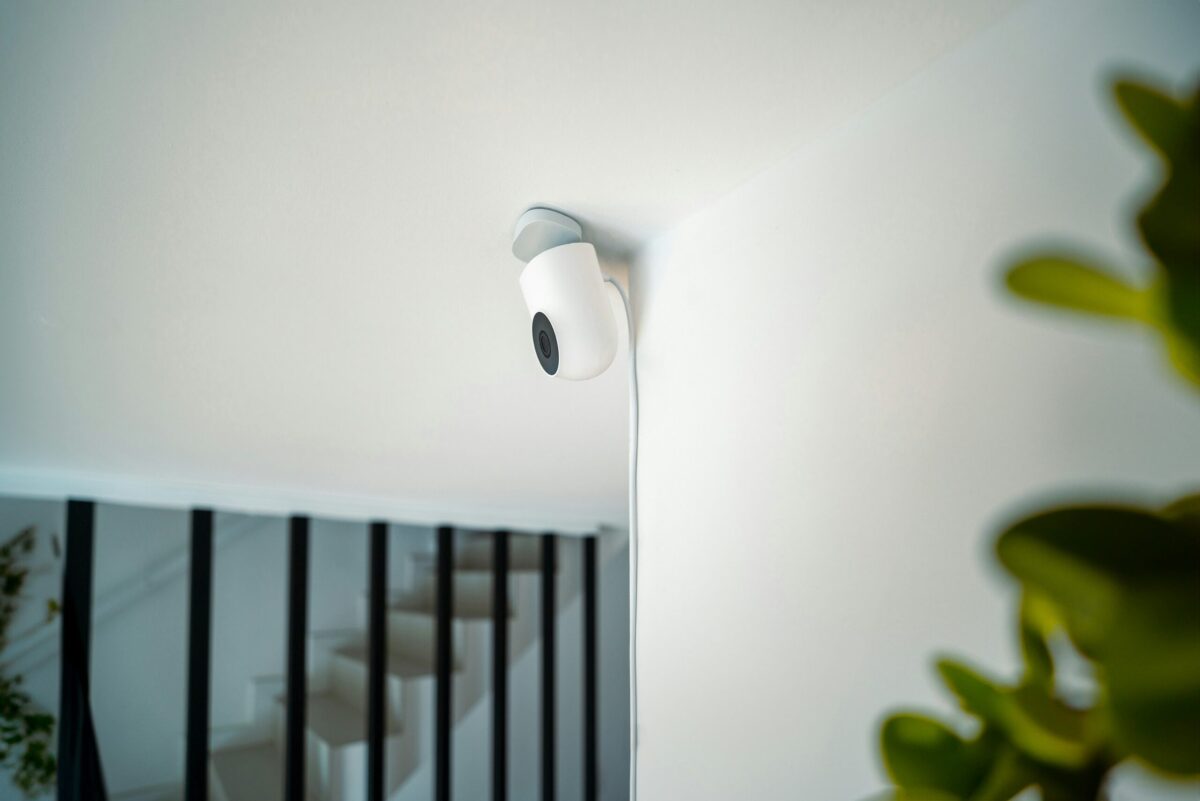What are Internet of Things (IoT) devices?
IoT devices, or Internet of Things devices, are everyday objects connected to the internet, enabling them to send and receive data. These devices range from consumer gadgets like Sonos speakers and smart thermostats to business tools such as CCTV cameras and industrial sensors. Many businesses use IoT devices to streamline operations and improve efficiency, often without realising the security risks they introduce. Understanding how to protect these devices from potential vulnerabilities and breaches is crucial for maintaining a secure IoT network.
Understanding the Basics of IoT cybersecurity
IoT security refers to the strategies and methods implemented to safeguard internet-connected devices from potential threats, vulnerabilities, and other security concerns related to the IoT network. As the Internet of Things encompasses a wide range of smart devices, from home appliances to industrial sensors, ensuring robust security is critical. With billions of IoT devices in use worldwide, these connected devices offer an expanded attack surface for cybercriminals. Securing IoT devices helps protect sensitive data and prevents attackers from gaining access to networks, mitigating critical security vulnerabilities.
When they are bad for your business
IoT devices, due to their connectivity and often minimalistic design, are susceptible to a range of IoT vulnerabilities and security threats. Many IoT devices operate on outdated firmware and have weak security features, making them prime targets for security vulnerabilities and cyberattacks. Common vulnerabilities include weak passwords, lack of encryption, and outdated firmware (software that runs on the physical hardware). Many devices come with default passwords that are rarely changed, making them easy targets for hackers. Additionally, data transmitted by IoT devices is often not encrypted, allowing attackers to intercept sensitive information easily. Without regular updates, IoT devices can be exploited through known vulnerabilities, putting the entire network at risk.
Protecting Sensitive Data
IoT devices often collect and transmit sensitive data, including personal information and business-critical data, raising significant information security concerns. Ensuring privacy and security is crucial to protect this information from being accessed by unauthorized users. By implementing robust IoT security measures, businesses can prevent data breaches that could lead to financial losses, reputational damage, and legal consequences.
Types of Threats
The security landscape for IoT devices includes various threats such as malware and ransomware, DDoS attacks, and physical tampering. IoT devices can be infected with malware, allowing attackers to take control of the device or demand a ransom. Compromised IoT devices can be used to launch Distributed Denial of Service (DDoS) attacks, overwhelming networks and causing significant disruptions. Devices located in public or insecure areas can be physically tampered with, compromising their security and functionality. The 2016 Mirai botnet attack is a prime example where IoT devices were hijacked to launch a massive DDoS attack, highlighting the importance of securing these devices.
VLANs and Network Segmentation
Virtual Local Area Networks (VLANs) are a powerful tool for enhancing network security by segmenting a network into separate, isolated sections. Businesses can mitigate the security vulnerabilities associated with these devices by placing IoT devices on their own VLAN. If an IoT device is compromised due to a vulnerability, the VLAN segmentation ensures that the breach does not affect the main network, which includes critical computers, servers, and other devices. This segregation is particularly important because IT support teams often cannot directly manage all third-party IoT devices. By isolating these devices, any security issues can be contained within the VLAN, protecting the broader network infrastructure from extended security threats.
Impact on Compliance
Due to existing security vulnerabilities, Out-of-date IoT devices can significantly impact compliance with standards such as Cyber Essentials or similar frameworks. These compliance standards require that all connected devices have up-to-date security measures, including the latest firmware and patches. If IoT devices are not maintained properly, they can become weak points in the network, leading to potential non-compliance and increased vulnerability to cyber threats. Ensuring that all devices meet compliance standards is critical for maintaining a secure and compliant IT environment.
We offer comprehensive IT support tailored to meet the unique needs of your business. We can help manage and secure your IoT devices by implementing robust network segmentation strategies like VLANs. Our team ensures that all your devices are up-to-date with the latest security patches, helping you maintain compliance with standards such as Cyber Essentials. By providing proactive maintenance and monitoring, we protect your network from potential threats and vulnerabilities, allowing you to focus on your core business activities with peace of mind and robust cyber security.
Need help maintaining a secure IoT network?
With our expertise, you can safeguard your IoT devices and ensure a secure, compliant and efficient IT environment while addressing any potential security vulnerabilities.
Get in touchFAQs
What are the common IoT security issues?
Common IoT security issues include poor security practices, lack of robust security measures, inadequate password protection, and vulnerability to malware and other cyberattacks. It’s essential to implement strong security solutions to mitigate these risks.
How can I protect my business from IoT security threats?
To protect your business from IoT security threats, ensure that all connected IoT devices are secure by design, regularly update software, use strong passwords, segment IoT devices on a separate network, and employ real-time monitoring and security solutions.
What is the impact of IoT security breaches?
The impact of IoT security breaches can be severe, leading to compromised sensitive data, disruption of business operations, financial loss, and damage to reputation. Understanding the impact of IoT allows businesses to take the necessary steps to fortify their defences.
Why are IoT devices vulnerable to attacks?
IoT devices are often vulnerable to attacks due to poor security configurations, lack of regular updates, and inadequately protected credentials. To prevent potential breaches, it’s crucial to ensure that IoT products are secure by design.
What security measures can enhance the security of IoT?
Enhancing the security of IoT involves using robust security measures such as encryption, authentication, regular firmware updates, network segmentation, real-time monitoring, and employing advanced security solutions to detect and mitigate threats.
How do IoT security risks affect the overall IoT infrastructure?
IoT security risks can significantly affect the overall IoT infrastructure by exposing it to potential attacks, resulting in data breaches, operational disruptions, and exploitation of connected IoT devices. Strong security measures are necessary to safeguard the IoT ecosystem.
What are some common IoT vulnerabilities?
Common IoT vulnerabilities include default passwords, lack of encryption, insecure communication protocols, outdated software, and inadequate access controls. Addressing these vulnerabilities is key to enhancing the overall security of IoT technology.
How does the number of IoT devices impact security?
The ever-growing number of IoT devices, estimated to reach billions in the coming years, increases the potential attack surface for cybercriminals. Ensuring each device provides robust security measures is essential to mitigate the associated risks.
What steps can be taken to protect IoT devices from malware?
To protect IoT devices from malware, use strong and unique credentials, keep device firmware updated, employ firewalls and intrusion detection systems, and implement real-time security solutions to monitor for and block potential threats.
What are some IoT solutions to handle security breaches?
IoT solutions to handle security breaches include deploying intrusion detection systems, ensuring timely patch management, conducting regular security audits, using secure communication protocols, and maintaining a comprehensive incident response plan





